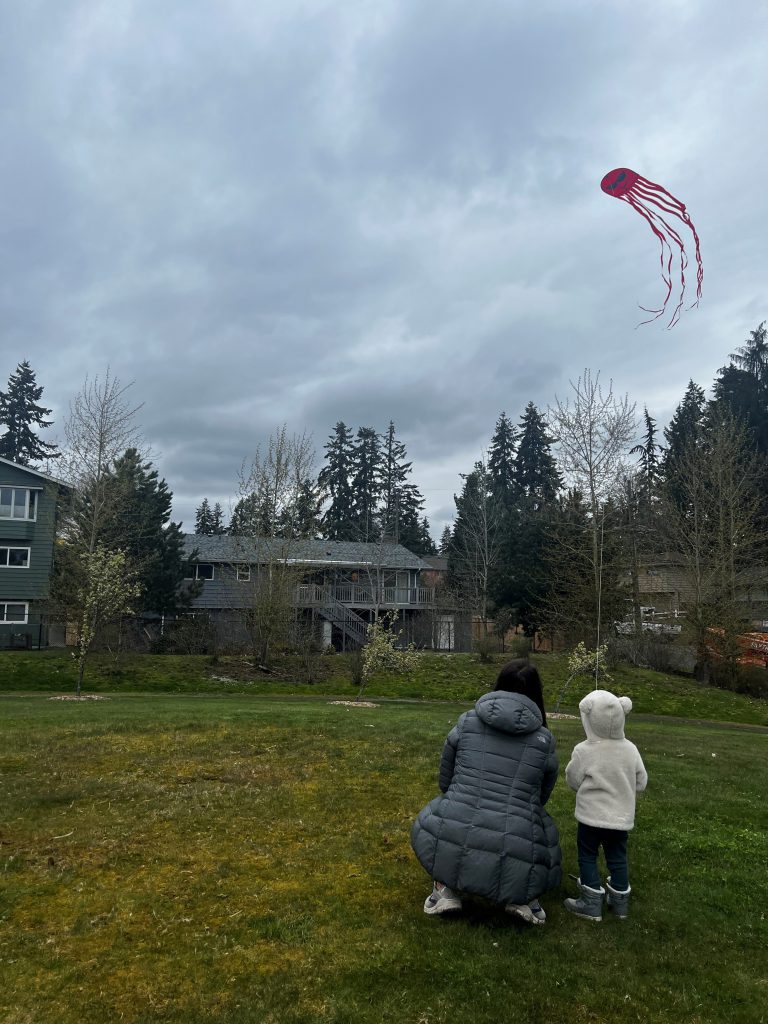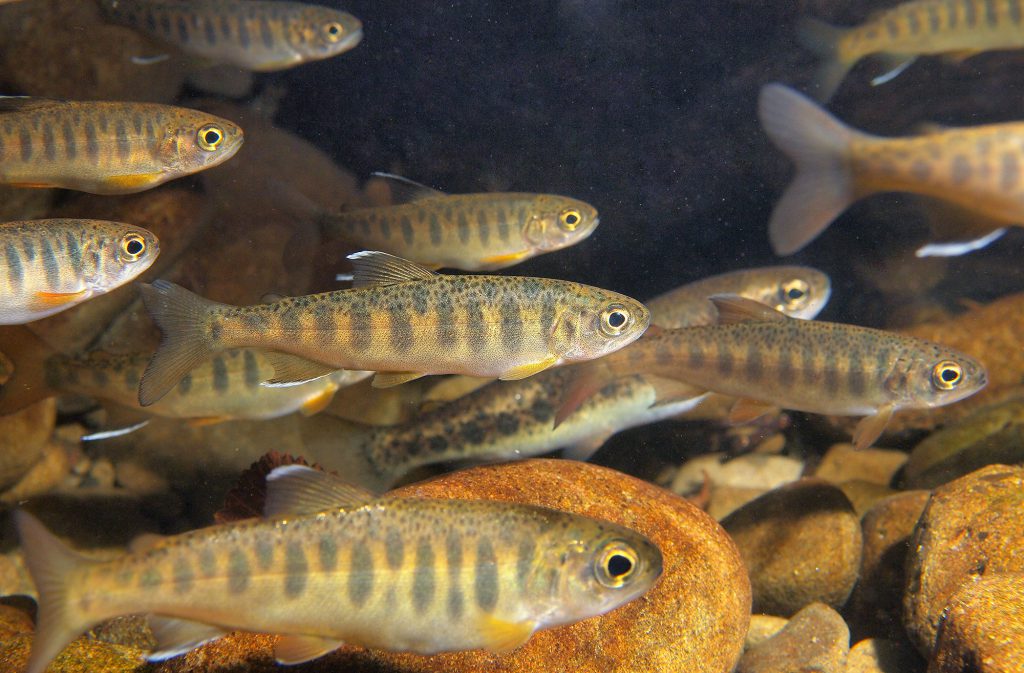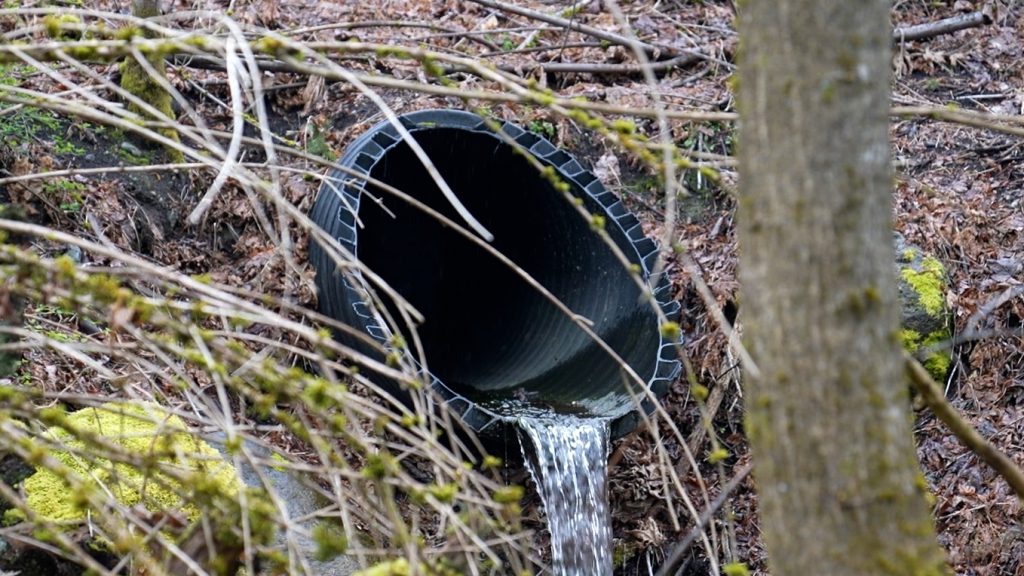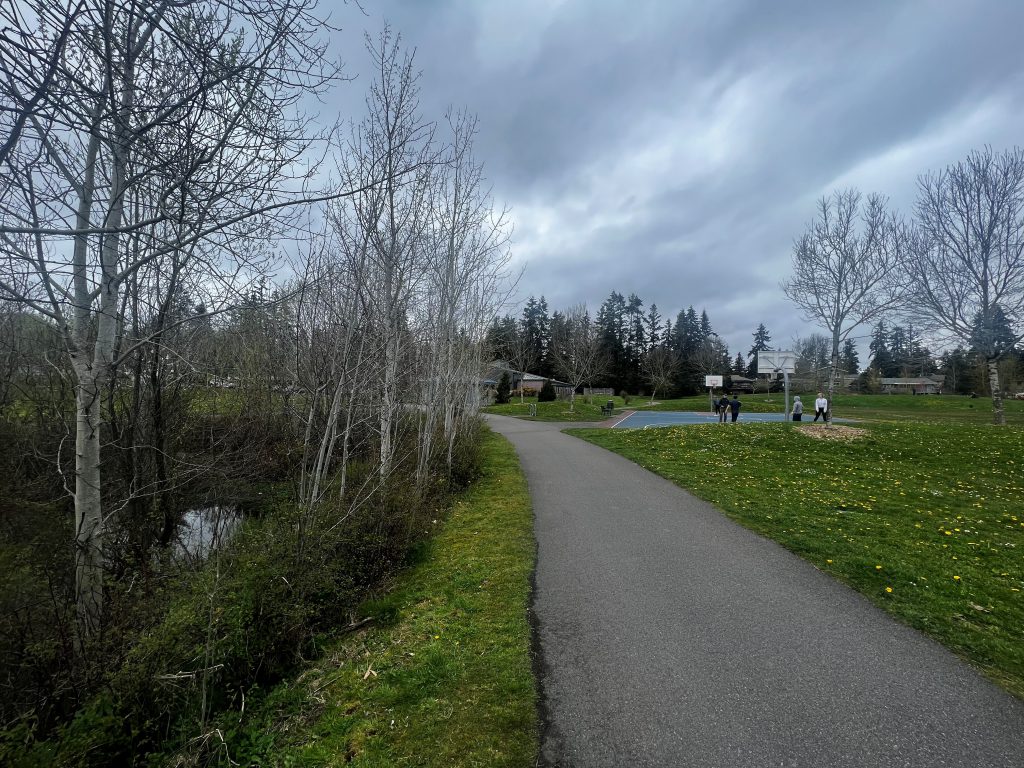
In between spring rain showers families in Shoreline congregate at Cromwell Park to fly kites, play sports, walk dogs, and watch birds and other wildlife. While this park indeed provides recreation and urban green space, it also serves as an important role in our shared restoration efforts. Renovated in 2010, the wetlands in this park help reduce the amount of pollutants that end up in our waterways.
Roads and transportation infrastructure crisscross our Washington landscape, including a vast network of streams, creeks, and rivers that connect our terrestrial, freshwater, and marine ecosystems. These roadways transport more than just cars; the water that flows across these impervious surfaces after rain or storm events, called stormwater, collects and carries pollutants. If not treated properly, pollutants in stormwater get washed into nearby waterways, deteriorating the health of one of our most vital resources, our water. Over 50 years since the enactment of the Clean Water Act, stormwater is the leading cause of water quality pollution in both our country and state today. While stormwater pollution has widespread impacts throughout an ecosystem, its effect on in-stream organisms, particularly salmonids (fish in the salmon family), is acutely hazardous.
While stormwater pollution has widespread impacts throughout an ecosystem, its effect on in-stream organisms, particularly salmonids (fish in the salmon family), is acutely hazardous.
For decades, scientists observed large populations of coho salmon throughout Puget Sound dying before being able to spawn. Called Urban Runoff Mortality Syndrome, it’s cause remained unknown until recently. In late 2020, a Puget Sound-based research team identified the culprit: 6PPD, a compound added to tires to increase durability. Specifically, 6PPD protects tires by reacting with ozone before it has a chance to break down rubber. Herein lies the issue. When 6PPD is exposed to ozone, it reacts to produce 6PPD-quinone (6PPD-q). As we drive, our tires leave behind tiny particles that contain 6PPD-q on the pavement. When it rains, snows, or hails, these particles get picked up by stormwater and ultimately secrete 6PPD-q into our waterways. Though this additive is designed to ensure the longevity of tires, its presence puts the future of salmon, particularly coho, at risk.

The Fish: keystone species in decline
Puget Sound and its inhabitants, non-human and human alike, rely on healthy salmon populations. “Salmon are an absolutely vital component of our North Pacific ecosystem. Without salmon, our ecosystems are depleted of nutrients,” says Chris Ellings, the salmon recovery program manager with the Nisqually Indian Tribe. Beyond ecosystems, salmon support communities’ nutritional, spiritual, and cultural wellbeing throughout the Pacific Northwest. “Salmon are a reflection of our own wellbeing. The region is as rich or poor as the salmon,” says Ellings.
“Salmon are an absolutely vital component of our North Pacific ecosystem. Without salmon, our ecosystems are depleted of nutrients.” — Chris Ellings
Salmon are also inherently interconnected with tribal treaty rights in Washington. For federally recognized tribes, the 1974 Boldt decision reaffirmed their right to harvest fish and established tribes as fishery co-managers with the state. As Elling’s says, “If there aren’t fish, there aren’t treaty rights.”
Integral to our region, salmon recovery has been a principal component to Puget Sound restoration. The discovery of 6PPD-q now adds another layer to our recovery initiatives. “6PPD is a huge threat to the region’s salmon recovery efforts. You can do all kinds of in-stream restoration work, but if it’s exposed to toxic roadway runoff, all those efforts are kind of moot when it comes to recovering sensitive species like coho,” says Ashley Bagley, former staff at Long Live the Kings, a regional non-profit helping to restore healthy salmon and steelhead populations throughout the Pacific Northwest.
One reason 6PPD-q has been so devastating to salmon is due to timing. As low flows can hinder accessibility, adult salmon, ready to spawn, navigate rivers during freshets and high tides. Yet these same rains that allow salmon to return to their natal grounds also wash tire particles containing 6PPD and other toxins into streams, poisoning waterways and making them lethal to salmon even with small concentrations of 6PPD-q, as low as 0.1 parts per billion. These storms can also overwhelm older stormwater infrastructure, contributing to the deadly convergence between runoff pollution and salmon.
6PPD-q’s toxic discovery sparked regional, national, and global attention. While knowledge gaps remain, we now know the pollutant we need to address. Despite it being a singular contaminant, mitigating 6PPD-q in our ecosystems will require varied reduction pathways.

Responding to 6PPD-q: long-term vs. near-term solutions
The pathways follow two primary routes: source control and stormwater management. “As a stormwater professional, it’s hard to imagine a more challenging chemical and situation to need to control. The source is large and it’s ever present,” says Vince McGowan of the Washington State Department of Ecology. “We know that it is going to take a long time to get 6PPD out of tires. Even if we remove it from tires within a couple years, tires can last for a decade or more,” McGowan says. As no alternatives to 6PPD currently exist, source control may be a long and winding road, one salmon cannot wait for.
In the near-term, reducing the levels of 6PPD-q that end up in our waters will depend on mitigation strategies through stormwater treatment facilities. To date, stormwater best management practices (BMPs) most effective at reducing 6PPD-q concentrations include street sweeping, flow control, and treatment. Treatments that are expected to be most efficient include settling, sorption, filtration, infiltration and bioretention. Importantly, these approaches can offer benefits beyond just 6PPD-q reduction and can occur through both ‘grey’ and ‘green’ stormwater infrastructure.
Simply put, ‘green’ stormwater infrastructure (GSI) mimics nature. GSI absorbs and filters runoff through permeable surfaces or substrates, soil and plant systems, or flow-control and infiltrating landscapes. It also provides innovative and multi-benefit solutions.
“Our stormwater parks are successful when they provide a water quality benefit but also meet community needs.” — Erika Harris
Stormwater parks, for example, are designed to collect and clean runoff from roads, parking lots, residential land, and commercial properties through bioretention and filtration processes. Yet, their benefits ripple beyond just salmon and stormwater. “By their nature they are interdisciplinary,” says Erika Harris of Puget Sound Regional Council. “Our stormwater parks are successful when they provide a water quality benefit but also meet community needs.”
Stormwater parks that simultaneously provide green space while treating and managing stormwater, such as Shoreline’s Cromwell Park, integrate community wellbeing with environmental protection. While improving water quality, they also provide opportunities for greenspace, recreation, and outdoor activities that promote physical and mental health of visitors and neighbors. Since stormwater treatment facilities are most effective close to the source, “You want them to be an amenity to the community whenever possible,” says Ecology’s McGowan.
Studies found that bioretention, a GSI strategy used in facilities like stormwater parks, effectively treated run-off “in terms of both toxic chemical exposure and salmon spawner survival” and reduced 6PPD-q to undetectable levels. Moreover, modeling has shown that regional facilities like stormwater parks are the most cost-effective way at managing stormwater. A creative win-win solution, these greenspaces may simultaneously better the health of our waterways, salmon, and people.

Moving Forward: tools for success
Implementing strategies and continued research will require coordinated partnerships, leveraging existing and new initiatives, and sustained funding at the state and federal level.
Learning the answer to one question, the cause of Urban Runoff Mortality Syndrome, gives rise to numerous others. What sub-lethal impacts does 6PPD-q have on salmonids? What risks are associated with current BMPs? What environmental justice implications are there in how we respond to 6PPD-q? Which waterways have the highest 6PPD-q concentrations and where should implementation and treatment be prioritized? State agencies, universities, tribes, and nonprofits are currently researching to fill the knowledge gaps critical to mitigation and management strategies.
While it will take time to learn the answers to these questions, our recovery signposts, including the 2022-2026 Puget Sound Federal Task Force (PSFTF) Action Plan and 2022-2026 Action Agenda, prioritize mitigating adverse ecological effects of stormwater pollution. Congruently, in late 2022 the Ecosystem Coordination Board released a policy statement that outlines the roads we must take to fully confront issues related to 6PPD and 6PPD-q by 2030.
Continued funding of research and stormwater mitigation strategies allows us to navigate these roads successfully. The recent legislative session came to a close on April 23, 2023. Among widespread support for stormwater management, two budget requests were passed that focus acutely on 6PPD-q, Toxic Tire Wear in Stormwater and Address Toxic Tire Wear Chemical. Their approval importantly secures further research into this contaminant that may very well be the largest obstacle for the recovery of certain salmonid populations, including coho.
While we work to fill knowledge gaps over the coming years, every storm event washes more tire particles containing 6PPD into our waterways. In the near-term, to protect salmonids while perhaps also benefitting local communities, McGowan expresses a sentiment shared by all, “We have to get stormwater treatment facilities everywhere that we can.”
Written by Kate Loy
Kate Loy is a Washington Sea Grant Hershman Fellow working with Puget Sound Partnership. A recent graduate from the UW School of Marine and Environmental Affairs, her background in community-engaged environmental monitoring and science communication guides her work at the intersection of community and environmental wellbeing. As a fellow, Kate works alongside the Partnership’s Science and Evaluation as well as Communications teams to craft meaningful engagement strategies and communication products to support Puget Sound recovery initiatives. In her free time, you can find Kate often outdoors and nearly always with her dog wandering Salish Sea coastlines or exploring mountain trails.

